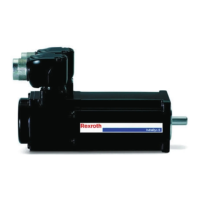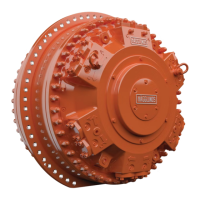6 Assembly
6.1 Motor assembly
6.1.1 Flange assembly
Motor damage due to ingress of liquids!
Liquid which exists over a longer period on the shaft sealing ring of the output
shaft can ingress into the motor and cause damage.
Ensure that liquid cannot be present at the output shaft.
Do not mount any open gearboxes (gearboxes that are not hermetically
sealed).
For details on mounting holes, please refer to the project planning manual.
DOK-MOTOR*-MSK********-PR··-··-P, "Synchronous servomotors MSK".
Use all motor mounting holes to mount the motor safely to the machine.
If coupling is direct, ensure that the support is plane and the orientation is
precise.
Avoid pinching or jamming the centering collar on the motor side.
Avoid damaging the receptacle fit on the plant side.
Use the following screws and washers for flange assembly.
Mounting screws for IndraDyn motors
Hole
⌀ [mm]
Screw 8.8
DIN EN ISO 4762
DIN EN ISO 4014
Tightening torque
M
A
[Nm] at μ
K
= 0.12
Washer
DIN EN ISO 28738
4.5 M4 × 20 3 -
6.6 M6 × 20 10.1 -
9 M8 × 20 24.6 yes
11 M10 × 30 48 yes
14 M12 × 40 84 yes
18 M16 × 35 206 yes
Tab. 6-1: Mounting screws tightening torque
6.1.2 Foot mounting
Before attaching the motors according to the foot assembly method, observe
the clearance from the center of the motor shaft to the bottom edge of the
foot specified in the particular motor dimension drawing. Compare this dimen‐
sion with the connection dimension on the machine side.
The mounting holes and clearances correspond to the general tol‐
erance according to DIN ISO 2768-1 (tolerance class m).
Before attaching the motor to the machine, it must be aligned so
that the center line of the motor shaft is aligned with the center
line of the connecting shaft.
The following procedure is recommended for foot mounting of the motors:
MSK Synchronous Servomotors 19/57
Assembly
R911325169_Edition 03 Bosch Rexroth AG

